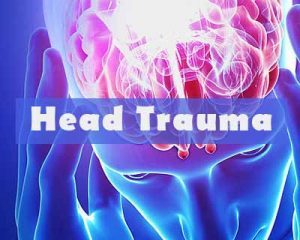- Home
- Editorial
- News
- Practice Guidelines
- Anesthesiology Guidelines
- Cancer Guidelines
- Cardiac Sciences Guidelines
- Critical Care Guidelines
- Dentistry Guidelines
- Dermatology Guidelines
- Diabetes and Endo Guidelines
- Diagnostics Guidelines
- ENT Guidelines
- Featured Practice Guidelines
- Gastroenterology Guidelines
- Geriatrics Guidelines
- Medicine Guidelines
- Nephrology Guidelines
- Neurosciences Guidelines
- Obs and Gynae Guidelines
- Ophthalmology Guidelines
- Orthopaedics Guidelines
- Paediatrics Guidelines
- Psychiatry Guidelines
- Pulmonology Guidelines
- Radiology Guidelines
- Surgery Guidelines
- Urology Guidelines
New skull MRI technique as good as Brain CT for radiosensitive head trauma patients

New skull magnetic resonance imaging technique has been found to be as good as Brain CT in the evaluation of head trauma. This will certainly be a useful option when imaging radiosensitive trauma patients such as children or pregnant women.
Zero-echo-time (ZTE)-based MR bone depiction and segmentation in the head is an efficient means of obtaining high-resolution maps of bone tissue with sufficient anatomic accuracy.
According to a study to be presented at the ARRS 2019 Annual Meeting, set for May 5-10 in Honolulu, HI, Zero TE (ZTE) skull magnetic resonance imaging (MRI) can be a possible option for clinical use in patients with skull lesions and may be helpful in managing radiosensitive trauma patients,
Magnetic resonance imaging (MRI) is a non-invasive diagnostic imaging tool based on the detection of protons into the tissues. This imaging technique is remarkable because of high spatial resolution, strong soft tissue contrast and specificity, and good depth penetration. However, MR imaging of hard tissues, such as bone and teeth, remains challenging due to low proton content in such tissues as well as to very short transverse relaxation times (T2). To overcome these issues, new MRI techniques, such as sweep imaging with Fourier transformation (SWIFT), ultrashort echo time (UTE) imaging, and zero echo time (ZTE) imaging, have been developed for hard tissues imaging with promising results reported.
The study was conducted to investigate the clinical feasibility of ZTE skull MRI for evaluating skull lesions in patients with head trauma, assessing its diagnostic image quality and quantitative values in comparison with computerized tomography (CT).
Thirteen patients with head trauma were evaluated using brain CT and skull MRI. Image quality assessments of the two imaging modalities were graded on a 5-point Likert scale by two attending neuroradiologists. To assess the quantitative analyses between image modalities, skull thickness and ratio of bone tissue property were measured, and interobserver reliability was measured with weighted kappa statistics and intraclass correlation coefficient.
ZTE skull MRI showed comparable diagnostic image quality to CT images for evaluating skull fracture with good correlation of quantitative measurement. Images were successfully obtained from all patients with ZTE skull MRI, and skull structures matched well with images obtained using CT scan.
The results suggest that in some cases ZTE skull MRI may be a clinical alternative to CT imaging in patients with skull lesions and because it does not generate radiation, ZTE skull MRI may be a useful option when imaging radiosensitive trauma patients such as children or pregnant women.

Disclaimer: This site is primarily intended for healthcare professionals. Any content/information on this website does not replace the advice of medical and/or health professionals and should not be construed as medical/diagnostic advice/endorsement or prescription. Use of this site is subject to our terms of use, privacy policy, advertisement policy. © 2020 Minerva Medical Treatment Pvt Ltd